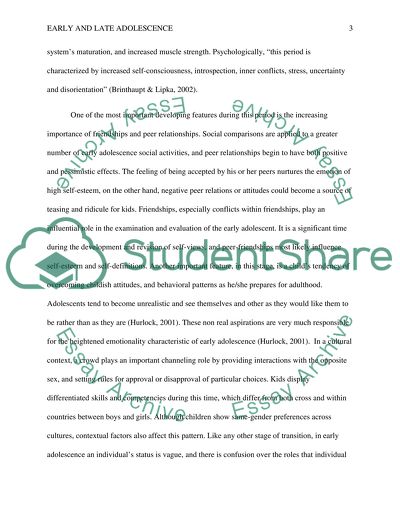Early and Late Adolescence Essay Example | Topics and Well Written Essays - 750 words. Retrieved from https://studentshare.org/psychology/1454189-u07d1-early-and-late-adolescence
Early and Late Adolescence Essay Example | Topics and Well Written Essays - 750 Words. https://studentshare.org/psychology/1454189-u07d1-early-and-late-adolescence.


